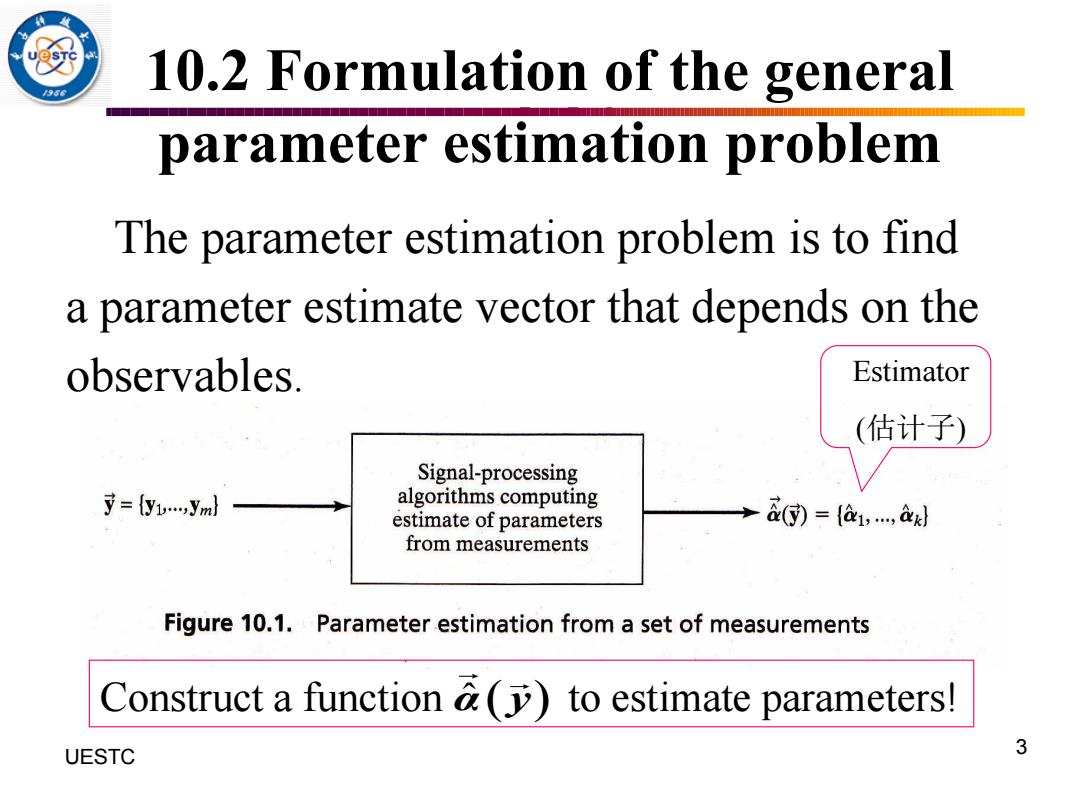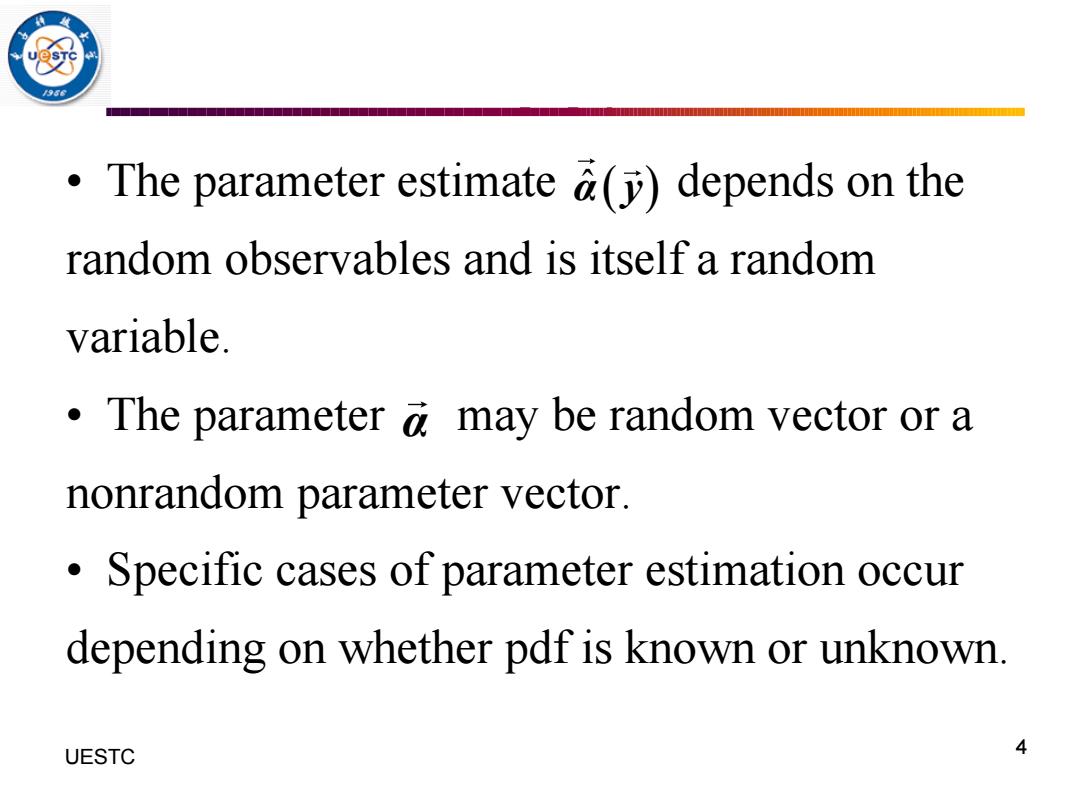
Chapter 10 Fundamentals of Estimation Theory UESTC 1
1 UESTC Chapter 10 Fundamentals of Estimation Theory

10.1 Chapter highlights Parameter estimation problem formulation Properties of estimators ·Bayes estimation ·inimax estimation Maximum-likelihood estimation Comparison of estimators of parameters UESTC 2
2 UESTC 10.1 Chapter highlights • Parameter estimation problem formulation • Properties of estimators • Bayes estimation • Minimax estimation • Maximum-likelihood estimation • Comparison of estimators of parameters

10.2 Formulation of the general parameter estimation problem The parameter estimation problem is to find a parameter estimate vector that depends on the observables. Estimator (估计子) Signal-processing 寸={y1w…,yml algorithms computing estimate of parameters &(G=a,,a from measurements Figure 10.1.Parameter estimation from a set of measurements Construct a function &(to estimate parameters! UESTC 3
3 UESTC 10.2 Formulation of the general parameter estimation problem The parameter estimation problem is to find a parameter estimate vector that depends on the observables. Estimator (估计子) Construct a function to estimate parameters! α ˆ( y)

5 The parameter estimate (depends on the random observables and is itself a random variable. The parameter a may be random vector or a nonrandom parameter vector. Specific cases of parameter estimation occur depending on whether pdf is known or unknown. UESTC 4
4 UESTC • The parameter estimate depends on the random observables and is itself a random variable. • The parameter may be random vector or a nonrandom parameter vector. • Specific cases of parameter estimation occur depending on whether pdf is known or unknown. α ˆ( y) α

Example 10.1 Constant number plus zero mean noise are yi=u+n, i=1,.,m The estimate can be defined by 空小点m m i=1 A direct estimation way (moment based method) 62=2(0y- 1ni1 i=1 UESTC 5
5 UESTC Example 10.1 Constant number plus zero mean noise are , 1,...., i i y n i m = + = The estimate can be defined by 1 1 ˆ m i i y m = = A direct estimation way (moment based method): 1 1 ˆ m i i y m = = ( ) 2 2 1 1 ˆ ˆ m i i y m = = − ( ) ( ) 2 2 1 ; , exp 2 2 i i y p y − = −